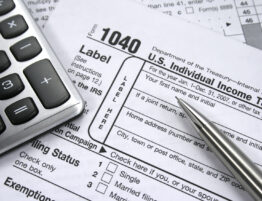
Home Office Tax Deduction
Can You Take the Home Office Tax Deduction?
You should determine whether you qualify for this valuable tax break, whether you’re self-employed, freelancing or working remotely because of the coronavirus.
A growing number of people now work from home. People are saying this is our “new reality” or at least until there is a trusted vaccine underway.
You may be able to take a tax break for your home office expenses, but you need to follow some strict rules.
There’s a lot of confusion around the home office deduction because many remote workers who took the break in the past are no longer eligible – the Tax Cuts and Jobs Act eliminated the home office deduction for employees who work from home for an employer. But self-employed people can still take the break if their home office qualifies.
Self-employed people can deduct their home office expenses from their business income – which isn’t subject to a 2% threshold – if they qualify. If you have any income from self-employment, it’s worthwhile to see if you’re eligible for this break and to know the rules when setting up your home office.
To qualify for the home office deduction, you must use part of your home “regularly and exclusively” for business. Your office doesn’t need to be in a separate room, but it has to be in an area of your home where you don’t do anything else. It can be a dedicated nook in the corner of your basement, for example, but it can’t be the kitchen table where your family also eats.
There doesn’t have to be a wall that cordons it off – if you have an area that is designated as your home office and nothing else is done in that area, you have an exclusive area. This may be just your desk and 5 feet around it in your basement. But if it’s your kitchen table and your family eats dinner there too, you just lost the deduction. Note that there are special rules for day care centers and inventory storage.
The space must also be your principal place of business or a place where you meet regularly with clients or patients. It doesn’t have to be the only place where you do work – it can be the place where you usually do administrative activities for your business, for example. If you’re a plumber and you work in different places but your administrative work is always done in that home office, then that would qualify.
There are two options for taking the deduction. The simplified option is easier but may result in a smaller tax break. The standard option requires more complicated calculations and recordkeeping but could give you a larger deduction.
The standard option: With this method, you deduct your actual expenses. You can deduct a portion of some overall expenses based on the area of your home (or apartment) that you use as the home office. For example, if your home office is 1/10th of the total square footage of your house, then you can deduct 10% of the total cost of some expenses, such as rent or mortgage interest, homeowners or renters’ insurance, and utilities (such as your electric, water and gas bills). You can also deduct a portion of your property taxes and depreciation on the home – those calculations are complicated, but the instructions to IRS Form 8829 can help.
You can deduct 100% of some expenses that are specifically for your home office, such as the cost to paint or make repairs to that room.
For a list of eligible expenses, see IRS Publication 587, Business Use of Your Home. Keep receipts of these expenses in your tax files.
The simplified option: The IRS introduced a simpler option for deducting home office expenses in 2013. Instead of keeping records of all of your expenses, you can deduct $5 per square foot of your home office, up to 300 square feet, for a maximum deduction of $1,500. As long as your home office qualifies, you can take this tax break without having to keep records of the specific expenses.
Many people are choosing this as a way to avoid the recordkeeping requirements, but it will probably come up with a lower deduction than what you would have if you actually went through the expenses.
How to take the deduction: If you use the simplified method, you take the deduction directly on Schedule C reporting your business income and expenses. If you choose the standard method, you must submit Form 8829 with your income tax return and then report the total deduction from your business income on Schedule C.
If you’re working at home for just a few months – which so many people are doing now because of the coronavirus – you may be able to take a partial-year home office deduction when you file that year’s income tax return. But you must be self-employed, and the home office must be used regularly and exclusively for business during those months. Keep this requirement in mind if you’re setting up a temporary office in your home: It doesn’t have to be a separate room, but it has to be a space you use exclusively for your business.
If you qualify, you can take the simplified deduction of $5 per square foot (up to 300 square feet) and prorate the amount based on the number of months that you worked from home. For example, if your home office is 150 square feet and you work there for six months, you can get a $375 deduction. Or you can deduct a portion of your actual expenses (such as mortgage interest or rent, utilities and insurance based on the percentage of your home’s square footage that you’re using as a home office) for the months when you’re working from home.
CLICK HERE for information regarding books published by Attorney Ronald Cook.
CLICK HERE to contact the law firm.



